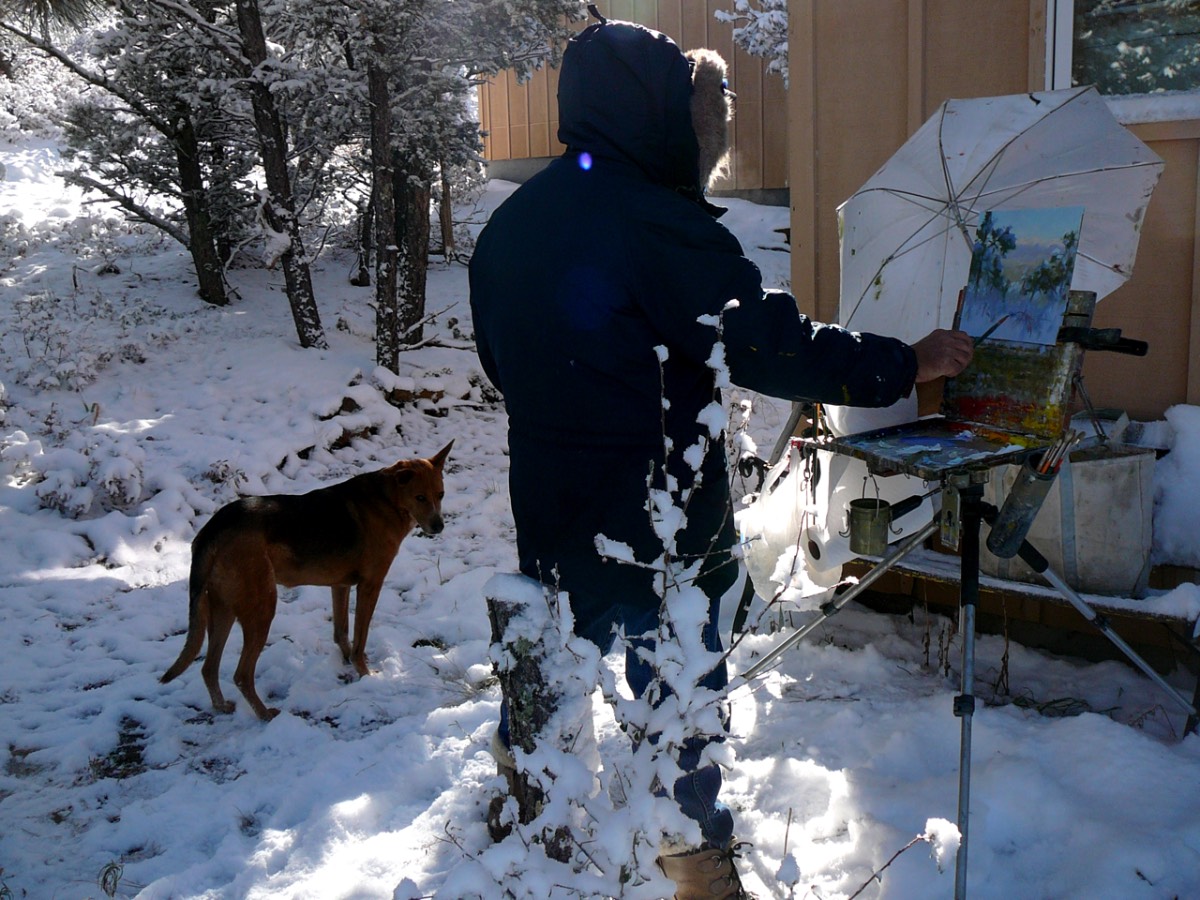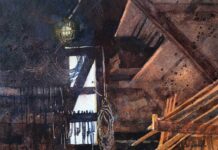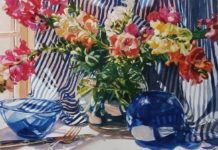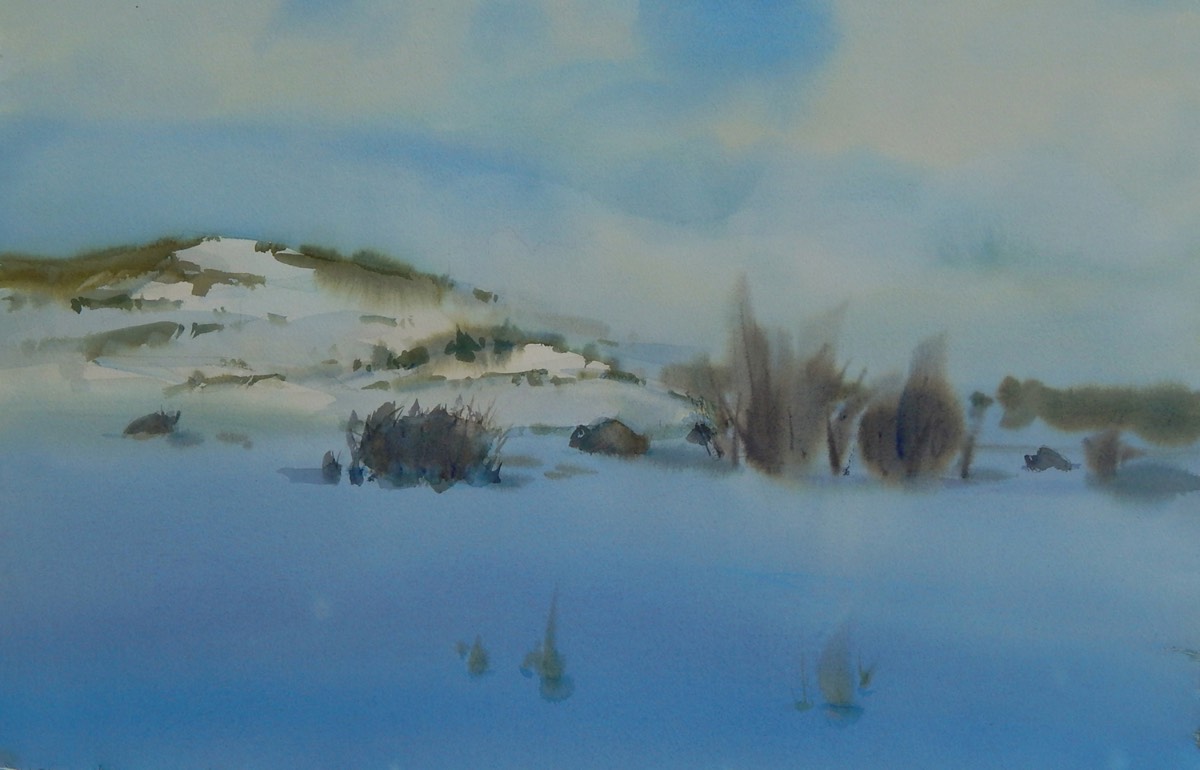
“The secret to capturing the illusion of snow (or anything else for that matter) is first to get the light right,” says Frank LaLumia. “Winter light is very distinctive. In winter, the arc of the sun (from sunrise to sunset) is flattened out. Sunlight passes through more atmosphere resulting in light that is filtered. That makes winter light warmer and softer than summer light. Truth be told, if you “get the light right,” your winter landscapes don’t even need snow to identify the season. The quality of the light itself is sufficient.

“The main things that contribute to the feeling of atmosphere in a painting are accurate relationships of color, value, temperature, and edges. Adding a spot of color to your painting creates a new context, both for that color as well as its neighbors. When these relationships are in harmony (read: accurate), then your painting will be full of color and light, of atmosphere and expression.
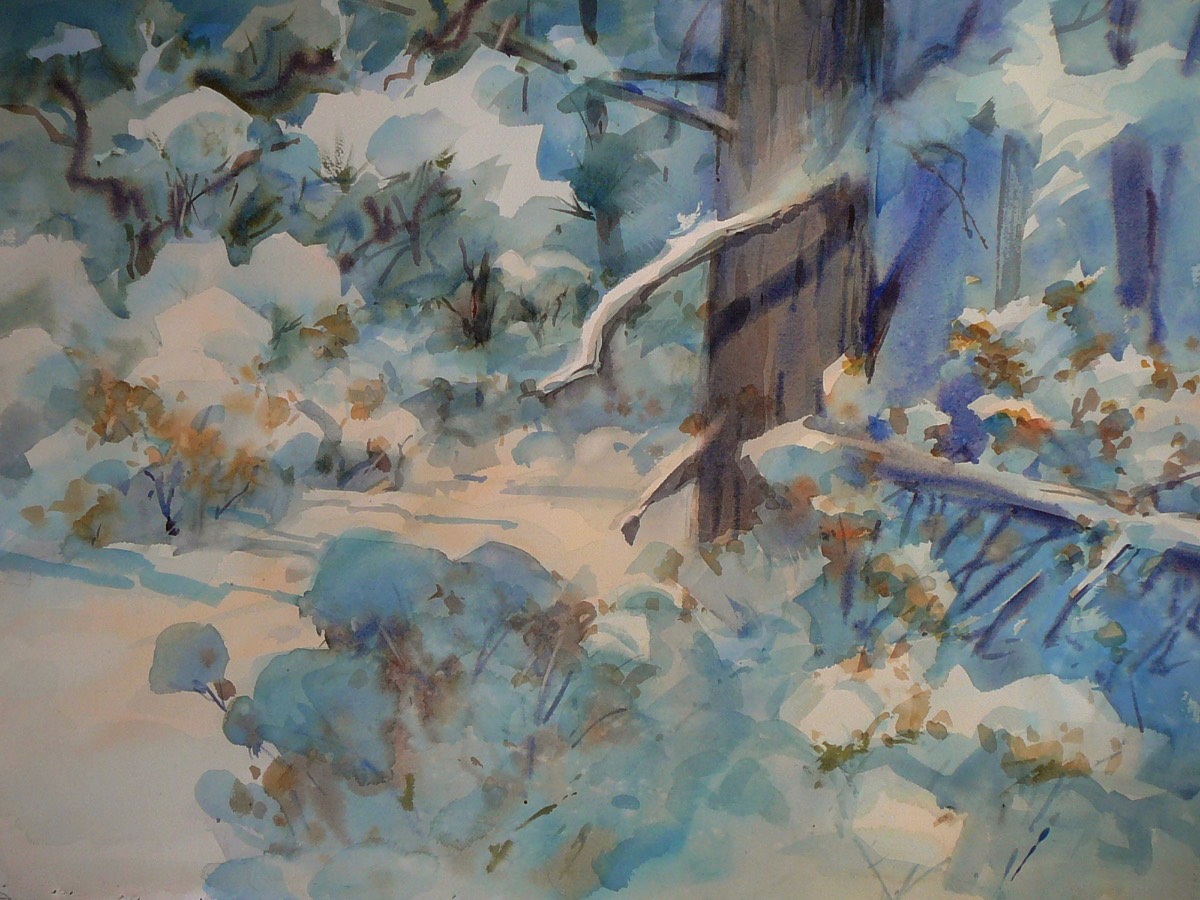
“One unique benefit to painting with watercolor is the transparency and delicacy of the medium itself. Winter light seems uniquely appropriate for the kind of sensitive handling it can achieve. Get the scene down clean and crisp, and you’ll have a keeper.

“Of course, plein air painting with watercolor in winter can be problematic. When it drops below 32 degrees, your washes start to slush up in the palette. You can try adding a bit of alcohol to the water, but in my experience that rarely works. When it’s too cold for watercolor, I switch to oil for plein air work, and use the results as inspiration for studio watercolors or larger oils. No matter which medium you choose, get a setup that works for you and have at it. Winter is too good to waste.”
